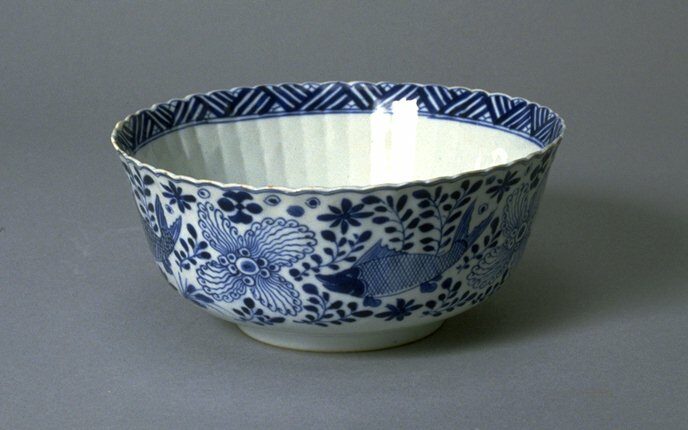Bowl
Chinese

Description
Subject Matter:
A qinghua (清华) blue and white bowl of the Kangxi period (1662-1722).
Kangxi, the second emperor of the Manchurian Qing dynasty, took the throne at the age of eight and ruled for a total of sixty-one years, the longest of any Chinese emperor. Being a foreign ruler in China, he assimilated by learning Chinese, becoming Buddhist, and studied the Classics to to gain public support. He accomplished many great feasts such as completing the unification of China, improved government administration, decreased corruption, and of most importance to the production of porcelain, he reinstated the official kilns at Jingdezhen and opened the overseas trade. During Kangxi’s reign (1662-1722) there were many advancements to porcelain manufacture and the introduction of many new types and forms. Kangxi achieved this by appointing two different kiln supervisors during his tenure, Zang Yingxuan and Lang Tingji who are the names behind Zang yao (ware) and Lang yao (ware), respectively. Other types discovered and produced during this time include but are not limited to various refined monochromatic and copper red glazes, including Lang yao—sang de boeuf—and peach-bloom, underglaze blue in five colors, the powder colors, famille verte, bisquit, fencai, and enameled color, falangcai. Porcelains produced under the Kangxi reign appealed to both to the of Chinese society, as well as, those overseas.
Physical Description:
A porcelain fluted bowl with a scalloped rim on a foot ring. The exterior is painted with fish and aquatic plants, the interior rim is painted with a zigzag border. The bowl is covered with a clear glaze.
Usage Rights:
If you are interested in using an image for a publication, please visit https://umma.umich.edu/request-image/ for more information and to fill out the online Image Rights and Reproductions Request Form.